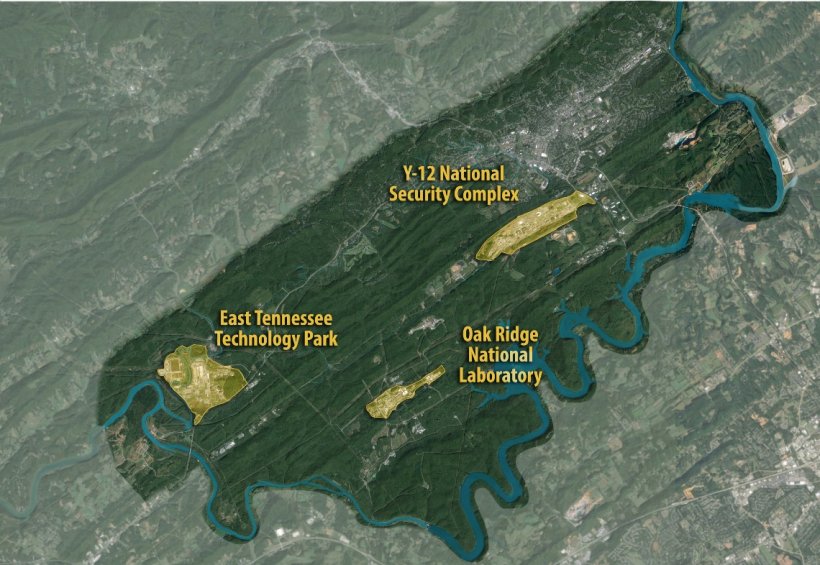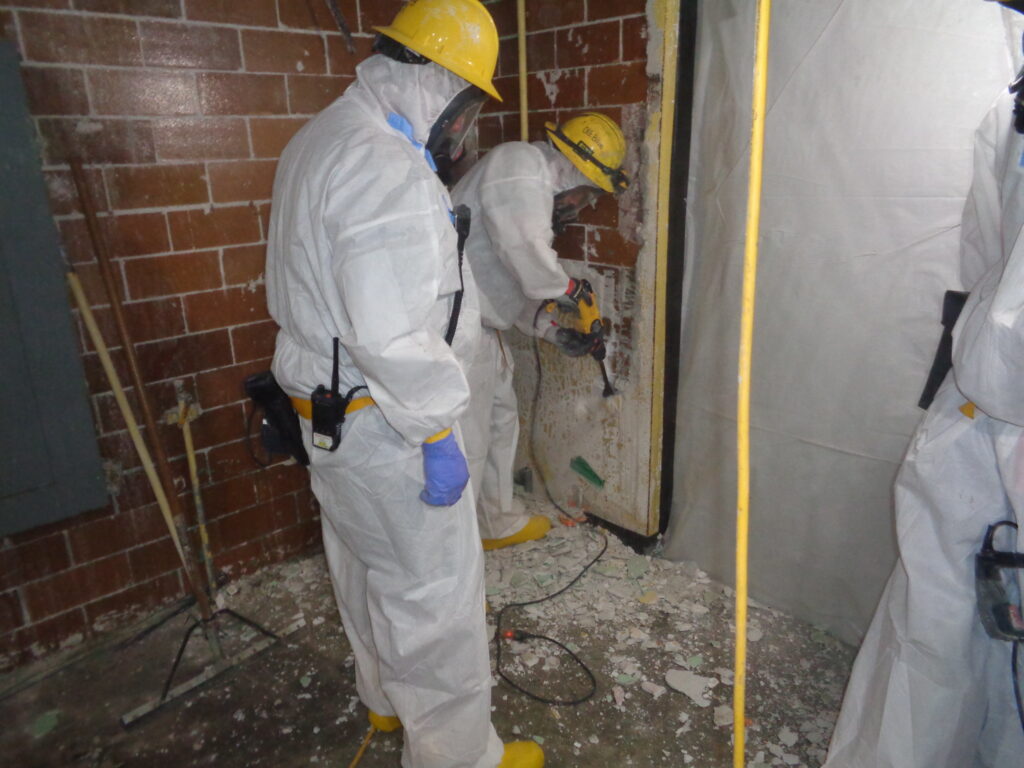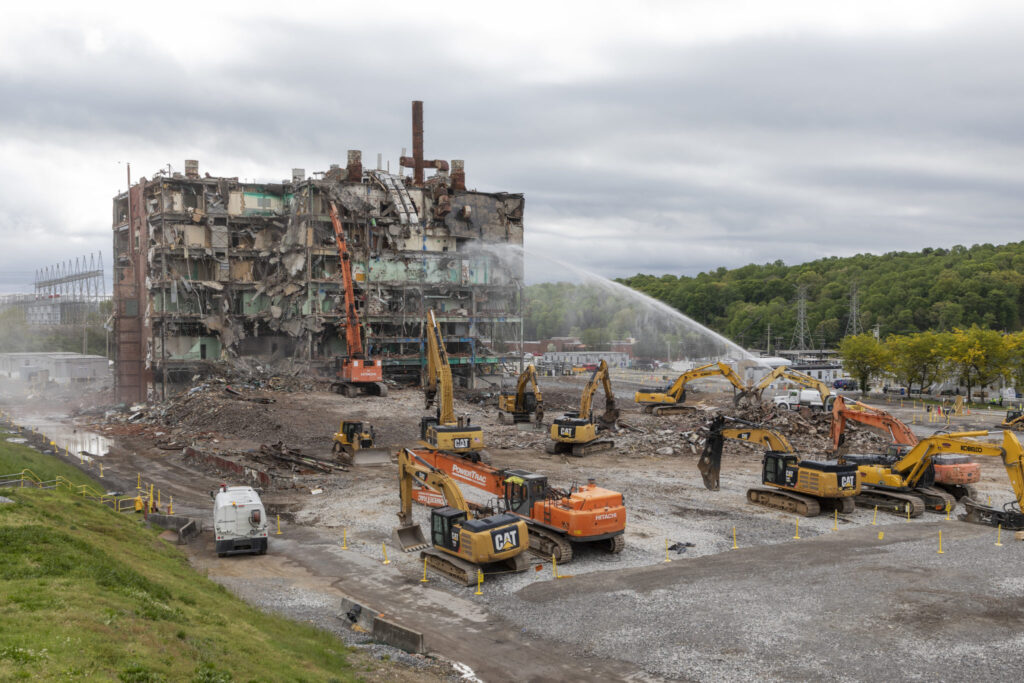Construction in fully encapsulated, impermeable suits presents big safety challenges that physiological monitoring can help with. UCOR is one company that has embraced SlateSafety’s advanced wearable technology to keep its workforce safe.
As a leader in environmental remediation and safety, UCOR recently completed the deployment of hundreds of BAND V2s, increasing safety and operational efficiency across multiple sites. In 2021, UCOR recognized SlateSafety as a Small Business of the Year.
Located in Oak Ridge, Tennessee, UCOR is the lead cleanup contractor for the Department of Energy Oak Ridge Office of Environmental Management. A unique mission and a necessity for safety have paved the way for the pursuit of innovative solutions to combat heat stress.
Under UCOR’s purview are the cleanup operations of three diverse sites: the East Tennessee Technology Park, the Oak Ridge National Laboratory, and the Y-12 National Security Complex; each with its own missions and challenges.
The History
Oak Ridge, Tennessee, is home to one of the Department of Energy’s largest and most diverse sites dating back to 1942 as part of the Manhattan Project. Engineers developed three distinct campuses within the Oak Ridge Reservation (ORR), and each pursued a different technology to help the wartime effort. In the decades since, each of these campuses — the Oak Ridge National Laboratory (ORNL), Y-12 National Security Complex (Y-12), and East Tennessee Technology Park (ETTP) have evolved and conducted different missions for the Department of Energy. Scientists and engineers have purified isotopes, conducted research, built weapons, and created environmental legacies that OREM has worked to clean and remove since 1989.
Today the three major sites for UCOR cleanup — ETTP, ORNL, and Y-12 — comprise about 30% of the 32,000 acres at ORR.

The Work
UCOR’s work portfolio is varied. A breadth of capabilities is needed to complete such complex projects. Generally,, the work is broken down into two categories: Demolition and Operational & Support Tasks.
Demolition
- Utility Isolations (also known as Cold and Dark)
- Disconnecting the building or structure from all utility sources (e.g., electricity, water, gas, alarms)
- Deactivation
- Identifying hazards (e.g., structural deterioration, contamination) and removing hazardous and radioactive materials, equipment, piping, universal waste (e.g., light bulbs, batteries, circuit boards), asbestos, and other items prior to demolition.
- Demolition
- Destruction and removal of physical facilities and structures, usually accomplished with heavy and/or high-reach equipment
- Waste Management & Disposal
- Packaging, loading, shipping, and disposing of all waste (e.g., equipment, construction debris, soil) from deactivation, demolition, and remediation activities
- Remediation
- Identifying the extent of contamination of soil, groundwater, sediment, or surface water around the demolition area through sampling (characterization) and removing those contaminants through excavation or treatment (remedial actions)
Operational Support Tasks
- Nuclear Operations
- Ensuring 24/7 operations of the Liquid & Gaseous Waste Operations (LGWO) facility, which treats contaminated waste from cleanup activities and mission-critical science programs
- Surveillance and Maintenance
- Providing surveillance and maintenance services for nuclear facilities awaiting demolition, including periodic inspections and maintenance of structures, systems, and equipment to ensure hazards are contained.

The Challenge
UCOR has been a leader in providing physiological monitoring to its workforce for years. In the past, consumer-grade heart rate monitors were the best available tools. But these tools have long seen their expiry as the need for industrial-level requirements has exceeded capabilities. Major challenges that UCOR has encountered have spurred their search for new solutions. The challenges of previous solutions included:
- Using Bluetooth pairing as the primary form of communication led to connectivity issues
- Poor distance/range (maximum of 40 ft) of connectivity
- Inability of the connection to penetrate typical worksite conditions (thick walls/concrete/tunnel structure etc.)
- No historical data analytics capabilities
- Maximum of 40 workers
- Little to no customer support from manufacturer
Additionally, the heart rate monitor company had decided to stop making the model that the UCOR team had invested in over the years.
With these challenges, the industrial hygienists on UCOR’s physiological monitoring team knew the program needed a better option. It needed a tool specifically designed for the rigorous nature of an industrial setting with a support team that was willing to implement the unique requirements a DoE site can have.
The Solution
A variety of requirements must be met in order for a tool to deliver value onsite at a Department of Energy cleanup project. Ease of use, ruggedness and informative data are necessary in order to deploy the solution in the field. Even routine demolition and remediation tasks can demand advanced levels of personal protective equipment (PPE) to perform safely. However, it’s not just the safety of the workers on the ground that’s important, the same security to protect national level secrets must be adhered to.
“From a technology standpoint, we must deliver a tool that is both effective and secure,” says SlateSafety CDO Joe Boettcher. “UCOR and the highly restricted facilities it operates in provide a challenge to get data out effectively to those that need it in a timely and secure fashion. We’re constantly looking for ways to deliver value and great partners like UCOR enable that.”
One of those novel solutions was recently launched in the form of the new mobile app, SlateSafety Go. The new offering, free to SlateSafety customers, offers a way to stay connected to local team members even in areas that have no connectivity.
A technology solution deployed in a vacuum will not create change. Another major contributor to the effectiveness of deploying SlateSafety technology is the UCOR industrial hygiene program and the close relationship with the SlateSafety development team.
Stephanie Miller, Safety and Industrial Hygiene Manager, praised the contribution SlateSafety has made to the success of their industrial hygiene program. Miller stated “At UCOR, we do everything we can to set the gold standard for innovation and excellence in our industry. SlateSafety’s BAND V2s have played a significant role in our ability to take protection of our workforce to the next level.”
The Case Study
Recently, the success of the SlateSafety’s solution at UCOR was profiled during a particularly interesting project on ENERGYCAST Oak Ridge.
One aspect of the project needed workers to perform decontamination for heavy equipment moving offsite. This decontamination process included the removal of dirt and debris from vehicles using high pressure water. The workers at these pressure washing stations need to wear impermeable clothing due to the nature of contaminants.
Because of this impermeable clothing requirement, physiological monitoring was needed to keep a closer eye on the workers.
“It gives the worker a better feel, to let them know we are watching out for you,” Said Dillon Stoner, Project Safety Specialist.
What makes the SlateSafety system attractive is that it provides real-time information for the site supervisors while also being very discrete.
According to Matt Linton, a UCOR Project Foreman, “Having the live monitoring makes a big deal. It gives us some great data as we’re working. To have it in hand so we can monitor people in real-time makes a huge difference.”
When asked about the impact the solution was having, Linton continued, “’Extremely crucial, it’s been a great addition and everybody really likes them.”
About UCOR
UCOR is a joint partnership with Amentum, Jacobs, and Honeywell. Their most recent contract with the Department of Energy (DOE) Oak Ridge Office of Environmental Management began in May 2022. With this and the previous contract (2011-2022), UCORs mission is to safely deactivate and demolish former nuclear facilities. As the lead cleanup contractor for DOE’s Oak Ridge Reservation, UCOR has earned a reputation for safe performance, innovative problem solving, and an unwavering focus on excellence. With a workforce of nearly 2,000, they are committed to the mission of protecting the people, the community, and the environment while eliminating hazards and reducing risks. Read more here.
SlateSafety’s technology is available nationwide and free trials are available but limited. Click here to find out more or book a free trial.

